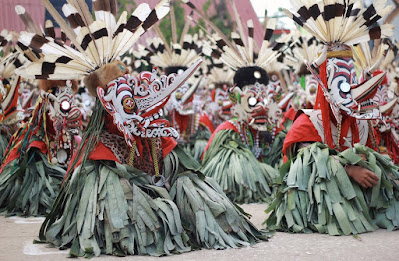The Origin of the Dayak Ancestors
When viewed from the origin of the place of residence, Coomans (1987) supported by Inoue (1999) states that the Dayak tribe is the descendant of immigrants from Yunnan Province in South China to be precise in the Yangtse Kiang River, Mekhong River and Menan River. Part of this group crossed into the Malaysian peninsula as a first stepping stone and then crossed into the northern part of the island of Borneo.
A Kayan figure also explained that the Dayak tribe is an Indo Chinese race who migrated to Indonesia in the 11th century. However, there are several researchers trying to divide the versions, based on their respective perspectives as follows:
The first version, (Malinckrodt, 1928) clarified the Dayak based on the similarity of customary law: (1) Kenyah-Kayan-Bahau; (2) Ot Danum, Ngaju, Maanyan, Dusun and Luangan; (3) Iban; (4) According to: (5) Klemantan; (6) Punan, Basap, Ot and Bukat.
The second version (Stihr, 1959) defines Dayak based on the similarity of the traditional death ceremony, and the clarification is the same as the first version.
The third version, (Riwut, 1958) clarifies the Dayak tribe into 18 groups, consisting of 403-450 sub-ednis; (10 Ngaju GROUP consists of: Ngaju, Maanyan, Luangan, Hamlet; (2) the Apau Kayan group; Kenyah, Kayan, Bahau; (3) the Murut group consists of Idaan (Dusun), Tidung, daqn Murut; (6) the Punan group : Basap, Punan, At and (7) Ot Danum group.
The fourth version, (Kennedy, 1974) clarifies the Dayak into (1) Kenyah-Kayan-Banau; (2) Ngaju; (3) Land Dayak; (4) Klemantan-Murut; (5) Iban; and (6) Punan.
The fifth version by Sellato 91989) divides the Dayak by the names of the major rivers where the group resides, namely: (1) Malay; (2) Iban; (3) Barito; (4) Bidayuh; (5) Sabah-Dusun-Kadasan; (6) Kayan-Kenyah; (7) Penan; (8) Kelabit-Lun Dayeh-Lun Bawang-Murut Bukit-Kajang, Berwan-Melanau.
Mamat Dayak Kenyah tribe. Malinau. North Kalimantan
Mamat is the most sacred traditional ceremony in Dayak Kenyah history, a ceremony of victory, glory and strengthening of male courage as war soldiers and rejecting evil spirits. This ceremony is carried out under the Belawing monument. Belawing monument is usually carved, on the top of which is made a statue of a hornbill waving its wings as a symbol of peace and victory in war. This acra is carried out when one of the Kenyah tribes wins the war and brings several enemy heads, so this ceremony is also a tribute to the soldiers as pillars of the front line defense (Panyit nyipe).
The head of the enemy that is taken home is then stored in a Bio lamin (big house) which is inhabited by the king (Paren) or the chief of the tribe / head of the big custom. The skull of this enemy is hung on the porch by the fire of the adat head and may not be removed or moved outside the house of the adat head because it is considered an asset so that it must be properly guarded. Because it is very sacred, this traditional ceremony is full of taboos, and anyone who violates will get disaster both concerned and for his group. (source: Uleh Ibo, Jhonson Lilit, and Darwin; Malinau).
Kancet Hudoq (Mask Dance), usually played by women who are over 50 years old on average. Each dancer wears a mask (hudoq) made of manic, accompanied by heart music. The purpose of this dance is to reject any reinforcements that may occur in the village. (source: Books from the Department of Culture and Tourism of Malinau Regency.)
